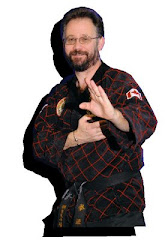ADHD and The Mozart Effect
The Mozart effect can refer to:
A set of research results that indicate that listening to Mozart's music may induce a short-term improvement on the performance of certain kinds of mental tasks known as "spatio-temporal reasoning;"[1]
Popularized versions of the theory, which suggest that "listening to Mozart makes you smarter", or that early childhood exposure to classical music has a beneficial effect on mental development;
With this being said imagine what the possibles are for kid's with attention deficit disorder. Could we use classical music to help calm the mind of a child with attention deficit disorder, and help them focus and therefore do better in school and life in general?
It has been reported than when Albert Einstein was trouble, or confronting an problem, he would often pickup his violin and plan along with Mozart. This would calm his mind and help to find the answers he was search for.
What affect does certain kinds of music have on the human brain? First let's look at the different brain wave patterns;
There are four categories of these brainwaves, ranging from the most activity to the least activity. When the brain is aroused and actively engaged in mental activities, it generates beta waves. These beta waves are of relatively low amplitude, and are the fastest of the four different brainwaves. The frequency of beta waves ranges from 15 to 40 cycles a second. Beta waves are characteristics of a strongly engaged mind. A person in active conversation would be in beta. A debater would be in high beta. A person making a speech, or a teacher, or a talk show host would all be in beta when they are engaged in their work.
The next brainwave category in order of frequency is alpha. Where beta represented arousal, alpha represents non-arousal. Alpha brainwaves are slower, and higher in amplitude. Their frequency ranges from 9 to 14 cycles per second. A person who has completed a task and sits down to rest is often in an alpha state. A person who takes time out to reflect or meditate is usually in an alpha state. A person who takes a break from a conference and walks in the garden is often in an alpha state. Classical Music, like Mozart will induce an Alpha Wave state in the brain.
The next state, theta brainwaves, are typically of even greater amplitude and slower frequency. This frequency range is normally between 5 and 8 cycles a second. A person who has taken time off from a task and begins to daydream is often in a theta brainwave state. A person who is driving on a freeway, and discovers that they can't recall the last five miles, is often in a theta state--induced by the process of freeway driving. The repetitious nature of that form of driving compared to a country road would differentiate a theta state and a beta state in order to perform the driving task safely.
The final brainwave state is delta. Here the brainwaves are of the greatest amplitude and slowest frequency. They typically center around a range of 1.5 to 4 cycles per second. They never go down to zero because that would mean that you were brain dead. But, deep dreamless sleep would take you down to the lowest frequency. Typically, 2 to 3 cycles a second.
When we go to bed and read for a few minutes before attempting sleep, we are likely to be in low beta. When we put the book down, turn off the lights and close our eyes, our brainwaves will descend from beta, to alpha, to theta and finally, when we fall asleep, to delta.
Now, what would happen if we were to bring the ADHD child to an Alpha state, using music, when they needed to complete a task (homework is a good example.) Children with normal brain activity will product Beta Waves when they are engaged in an activity. ADHD kid's will produce more Theta Waves, which is why they tend to drift off more easily that other children. The ideal learning state, a state were the non conscious mind is absorbing the most information is Alpha Wave state.
Now, this is only a theory, I will do more research and make amendments to this article as needed.
